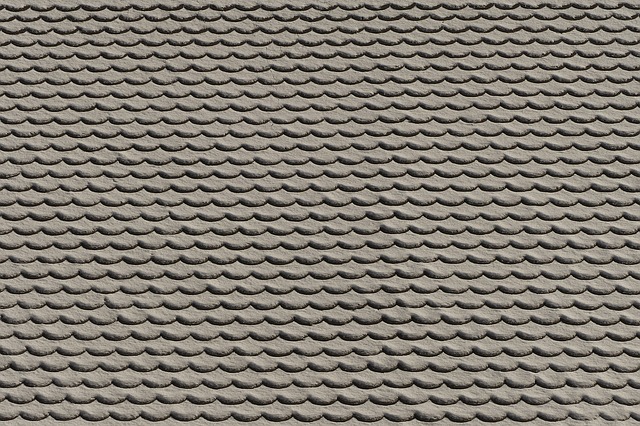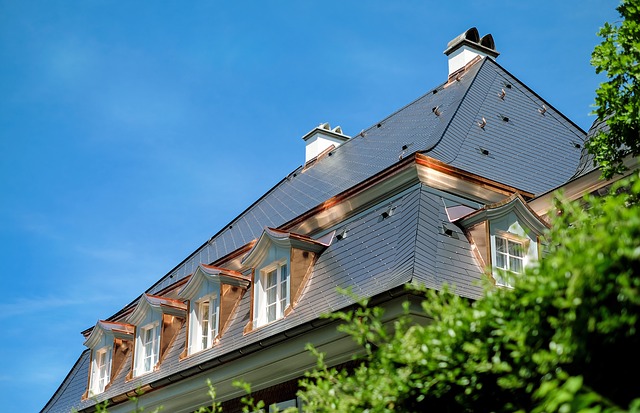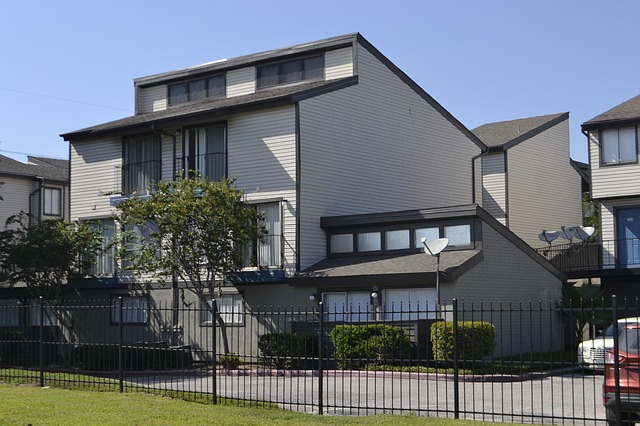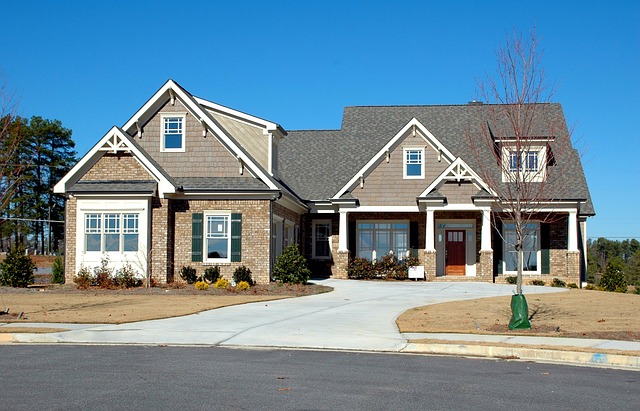
Frequent winter roofing issues can easily get out of hand by the repeated freeze and thawing attacks during the cold winter season. While it’s somewhat dangerous to treat all the issues during that time by yourself, postponing the fixes until springtime can make the current issue worse. Thus, call for a professional inspection as soon as possible so you can stay stress-free during the winter holidays.
1. Loft Condensation
When a cool surface gets in touch with warm air, this will lead to condensation. The bad news is that a poorly insulated loft is a top candidate for the development of condensation, which may result in the accumulation of mold and mildew and even ruin the internal skeleton of the house. To stop this from happening, make sure that your attic is properly circulated.
Attic air circulation is an important yet commonly missed aspect of a functional roofing structure. The majority of homeowners know that loft circulation helps regulate the interior temperature and yields major energy savings. However, you should realize that poor air circulation can take its toll on your roof and shrink its functional life.
2. Tree Limbs
Large trees may look great and add to your property’s value, however, during the cold season, they can cause some major issues to your roof. Tree limbs hanging over your roofing can get loaded with large chunks of snow and ruin your roof’s shielding top level.
Branches that drop onto your roof can also lead to major problems. These tend to bear large chunks of snow as well, allow water to penetrate and slide off the roof’s protective cover.
Generally speaking, ensure that any branches are at least 10-feet away from your roof to prevent any issues.
Take a walk around your home and check trees for:
- Deceased or dead limbs that are about to fall off
- Indicators of rot or decay
- Broken and hanging branches
- Big branches near the roof
3. Lingering Damage
Has the heavy weather taken its toll on your home structure recently? If you haven’t called for a professional roof inspection, pre-existing damage will get out of hand during the current cold season. The build-up of snow or ice and the repeat ups and downs of winter temperatures can result in leakage, mold development, and skeleton damage.
Top 8 Eco-Friendly Roofing Choices
February 19th, 2021

There are currently novel construction products available that can help you actualize an energy-efficient and eco-friendly home.
Eco-Friendly Roofing Materials
There are several choices of eco-friendly roofing materials are available for sale. Each of these options differs and has its advantages and disadvantages. The roof that best suits your home is dependent on certain distinct conditions. However, there is a catalog of several choices to choose from, alongside what you should know about each option.
1. Cool Roofs
The cool roof is an example of an eco-friendly roof and is increasingly becoming popular among users. These roofs can reflect the sun’s rays because of a mixture of white glue and gravel. This reduces the amount of heat that makes its way into the building, thus reducing the dependency on air conditioners and electricity. The cool roofs also have longevity compared to the traditional roofs because of the unique materials used to make them.
Although cool roofs are most valuable in places susceptible to a high amount of heat and sunlight, the cost of its initial installation is relatively high, thus needs to be put into consideration. More so, if installed in an area with elevated temperature coupled with high humidity, this can create room for mold growth and can cause damage to the roof.
2. Wood Shingles
Among the eco-friendly roofs, wood shingles are famous for their distinct homely look. Wood shingle roofing has often been a very long-lasting material, with options of different colors, however easy to stain. They classify as eco-friendly because of their recyclability into wood products that people can reuse in their homes for other purposes.
If you do not reside in an environment close to a wood mill, you may find wood shingles to be particularly expensive. One other drawback is that wood shingles do not last for an extended period, as they tend to require replacement every 15 to 20 years. Furthermore, they need an ample amount of care to ensure that they do not rot or create room for molds, mildew, or any form of damage.
3. Metal Roofing
Metal roofing is also a common eco-friendly roofing material created from new or reused metals. Like cool roofs, metal roofing materials possess reflective features that return the sun’s rays as it hits the surface of the metal roof. These metal roof characteristics help cool the home, with less reliance on air conditioners that may be expensive. Also, metal roofs have a long durability, are not expected to damage soon, and exist in various alloys and designs, making them a suitable roofing choice.
Metal roofing is not relatively cheap, although it is one of the more common eco-friendly roofing options. It can be specifically noisy, especially during heavy storms, where it can also be vandalized or damaged. More so, with time, the color of the metal roofs may fade off as they become worn out. If you wish to sustain visual consistency, you will have to replace the damaged metal tiles which may be difficult and you will need to hire a professional San Diego roofing contractor to take care of it.
4. Clay Tiles
one of the eco-friendly roofs you may consider is clay tiles. The tiles take different colors and designs and offer other advantages such as being energy-efficient, allowing the circulation of hot air instead of trapping it. Similar to metal roofing, it requires relatively low-maintenance. Moreover, it is easy to repair the tiles if they get broken.
Sadly, unlike the other eco-friendly roofing materials discussed in this article, clay tiles are quite expensive to install. The installation can be complicated, and because of the weight of the tiles, and it may require extra architectural support to prevent the building from collapsing due to the added weight of the clay tiles.
5. Slate Tiles
If you need extraordinary long-lasting roofing, then look no further than slate tiles. These well-built tiles offer a remarkable and impressive appearance, durability, incombustible, as well as their general eco-friendly style. The slate roof can be made more energy-efficient by applying special tile coatings. The slate roofing is good-looking; however, it is strenuous to fix and needs an expert’s services to correctly carry out the installation. Finally, similar to clay tiles, it is necessary to get additional structural support for the safe installation of slate roofing because of its bulky weight.
6. Solar Roofing
One of the current, contemporary eco-friendly roofing options is solar roofing. It appears in various forms, such as solar panels fixed on an already made roof or tiles that constitute the roof itself. Although the initial installation cost is enormous, it will save the homeowners some electricity bills in the long run. This is because the solar panels can absorb sun rays, converting the solar energy to electric energy to provide electric power. Maintaining solar roofing is almost free, and the roofing is very durable. Owners of a solar roof can have their tax cut-off.
As earlier stated, one of the drawbacks limiting the use of solar roofing is its high cost of installation. It is also only valuable in areas with a relatively adequate amount of sunlight.
7. Living Roofs
The living roof is eccentric eco-friendly roofing with distinct characteristics. Unlike shingles, or the regular slates and tiles, living roofs are characterized by a garden-like feature at the top of the buildings. This outstanding feature makes them one of the most-eco-friendly roofing choices. In addition to their aesthetics, living roofs have long-lasting durability, enhance the building’s temperature performance, and enhance air quality within the area.
8. Synthetic Shake Shingles
Finally, one of the eco-friendly roofing materials currently available for sale is synthetic shake shingles. Produced from various materials, such as CeDUR’s, synthetic shingles contain polyurethane materials that confer several characteristics: highly durable, class A fire-resistance, and class 4 impact-resistant. Aside from that, they provide insulation properties to homes, allowing the homeowners to reduce reliance on their HVAC systems. In comparison to other eco-friendly roofing choices, they are quite affordable and require little or no maintenance.
Selecting the Best Eco-Friendly Roofing Material
There are advantages of choosing eco-friendly roofing materials for your house. Foremost, compared to the average roof, eco-friendly roofs are more sturdy and long-lasting, implying that your investment will be there for you for a more extended period. The eco-friendly roof is more appealing to the environment, more energy-efficient, keeping the house cooler and reducing the dependency on cooling and heating systems. Therefore, it is sustainable as lesser greenhouse gases are released into the atmosphere, thus cutting down your carbon footprint.
Different Roofing Types And Their Advantages
February 15th, 2021

Asphalt shingles enjoy wide popularity because they combine good looks and durability at an affordable cost. Plus, they are easier to set-up, saving you cash on labor fees as well. Secondary roofing materials such as a slate or metal usually cost more and in some cases up to 10X more, but they last significantly longer and look more pleasing.
Tile roofs are a popular choice in Florida regions because they deflect sun heat and blend with the Mediterranean style of local homes. While slate, in particular, is a more popular choice in the North East which is characterized by Victorian-style houses. Metal roofs are also a wide choice found in various country regions. The functionality of these roofing types varies according to the craftsmanship of the roofing expert. A metal roof may last half a century while slate roofs may impressively last a whole century with regular maintenance.
CR reviews asphalt shingles only, but we also provide info about false slate and tile. These two alternative material picks offer a faux look tile or slate, but they enable easy installation and cost much less compared to their original counterparts. For the sake of comparison, an original slate roof can cost $1500/per square, and thus the total cost may jump up to $100K.
Asphalt Roofing Shingles
Cost: $65-350/square
Asphalt shingles are constructed of fiberglass placed in-between asphalt and ceramic granules. The fiberglass material offers more power, while the asphalt is combined with minerals to make it water-resistant. The color of the shingles is attributed to the ceramic granules, which also help repel UV light and its deteriorating impact. Fairly light, affordable, and easy to set up, asphalt shingles are the best option for most homes.
They are offered in multiple sheet layers installed one shingle at a time, to mimic the appearance of more expensive shingles e.g. slate or cedar. They also come in three sub-categories. Basic. entry-level shingles are the thinnest and least expensive. Architectural shingles are also a level beyond ordinary 3-panel shingles.
They are a tad thicker and designed to mimic the look of more expensive woods. Multiple layer shingles are the costliest and thickest of these types and offer a similar look to wood blends. Only 3-tab shingles can be placed above a single layer of former shingles but check your manufacturer’s warranty to make sure you are eligible for an entire warranty before you perform the installation.
Faux Slate Roofing Shingles
Cost: $310-500/square
This mixed material looks similar to the real thing, even at a close angle, but the cost is much lower. It also weighs nearly the same as asphalt shingles and thus there is no need to upgrade the roof’s lining, as in the case of slate. Constructed using several materials e.g. rubber, clay, polymer, and asphalt, faux slate is more slippery compared to pure slate.
If you live in an area that is frequently exposed to snowfall, consider getting some snow shields to stop ice sheets from falling and hitting someone. Some fake slate types may also shatter under weather attacks. Since this is an artificial composite material with a nailing line, most roofers can set this up easily. The warranties that come with fake slate roofing are typically comparable to asphalt shingles and so you can anticipate them to hold up to 50 years.
Metal Roofs
Cost: $850-1140/square
Metal Roofs are often available in copper, aluminum, or allow strips and in different forms and textures. Copper is remarkably costly but over time, it develops a greenish aura that some people like. Metal roofing, similar to slate, can be thin, so it’s best to get some snow shields if you live in a colder area to stop ice from falling off and hitting a passer-by. A metal roof can also produce annoying sounds when there is a rainstorm as drops of water drip against its surface.
Some time ago, we tested steel metal roofing and found that it is prone to dent fairly easily, but there are some choices with a textured panel that conceal the dents and dings pretty nicely. Metal roofs are also efficient in deflecting sun heat, keeping your home cooler during the home summer season, which is a big plus if you live in a hot climate. Make sure that you work with a contractor who has proven experience working with this kind of material before as it is a very different task from installing asphalt shingles. A metal roof has an average lifespan of 50-100 years.
Ultimate Guide To Prepare For Roof Replacement
February 13th, 2021

There are some types of home improvement that you can postpone for later. However, a leaky roof isn’t one of these types. Broken, bent or fallen shingles demand repair right-away. If you ignore the problem, water leakage can get out of hand and lead to major roof damage, making your energy savings vanish for good.
We test and review asphalt shingles roofs thoroughly, as they are one of the most common and popular types of roofing. Our findings reveal that not only functionality varies among manufacturers, but also among various product collections offered by each brand.
So here is how you can tell if you need a new roof – from examining the degree of leakage to finding out whether missing shingles are becoming an issue and what to watch out for when you are getting a new roof. In the present guide, we’ll navigate you through the most commonly used roofing options, their average cost, and their average life spans.
How To Know If You Need A Roof Replacement
Water stains on a ceiling’s surface and water dripping may leave you wondering if your entire roof is damaged. However, a single leak or stain doesn’t necessarily imply that your roof needs separately a huge number of fixing tasks. In some cases, you can stop the issue by just filling in a shatter with caulk or switching a few shingles, or even attaching some flashing – a metal layer that serves as a mechanical shielder to transfer water to gaps, corner, crevices, and other areas that are prone to leakage.
Fallen tree branches and storms may also cause shingles to fall off. Broken flashing is also another cause of damage. Even rubber boots surrounding the hydraulic pipes or poorly attached satellite antennas or solar panels can lead to leakage in certain spots. To find out the type of leakage you have, begin to detect its source first.
Watching Out For Leaks
It’s easier to spot signs of leakage when you are outside your home. Keep in mind that water often collects in a spot that is different from the one that it got in – it typically runs through the surface of a stud or rafter and drips once it hits a low spot.
In an uncompleted loft, the framing is exposed and so it’s best to check through the length of any wooden framing that connects to that point, to find out if you see a stream of water that comes from a higher level of your roof. If your attic is incomplete, you need to use a jab or similar handheld tool to trim away any drywall that hinders your optical scope. Once you have traced the source, examine the top layer of your roof to see if you can find some common causes of damage e.g fallen/missing shingles or damaged flashing close to the chimney spot.
If you can’t trace the source of the leakage, it’s best to hire a qualified roofing expert to check the roof and guide you on whether your roof needs fixing or full replacement. Even in case, you can trace your own leak spots, it’s best to leave the fixing matter to the hands of an expert. Jumping onto your roof with a long ladder is very risky for an amateur. Most leaks, however, can be fixed if they only occur in a few random spots. If, on the contrary, you encounter repeat leaks and your roof’s warranty has expired, it’s best to get a new roof. All the cash you would spare on getting various short-term repairs will be more than getting an entire roof with a lasting warranty.
Other Warning Indicators
There is no need to wait for leaking spots to occur before you contemplate making fixes to your roof. Broken, bent, or missing shingles are all signs of worsening leakage. Your roof’s age could serve as a tell-tale guide here. In most cases, insurance firms estimate that an asphalt shingle roof will last for 20 years, and some insurance companies will not cover the fees if your roof’s age is older e.g. in case a previous owner has installed it many decades ago. In this case, a roofing expert can give you a rough estimate of its age, by examining the state of the shingles.
Even if you don’t notice any apparent signs of damage, it is totally reasonable to get a new roof that has passed its warranty period and is more than two decades old. The reason why is because, once a leak forms, it can cause major damage to the wood layer that lies under the shingles. If this wooden layer gets rotted or warped, getting a new one will cost you thousands of bucks more than a mere new roof installation. The images below illustrate the various roofing layers comprising a new roof.
Insurance Company Coverage
Before hiring any roofing expert to do all the necessary fixing or replacement work, you better contact your insurance company to find out the coverage scope for roof fixes or a new roof. You ideally want to calculate your upfront fixing costs against the cost of getting a new roof altogether. Include any estimated rise in your premium as well–it is sometimes more reasonable to simply bear the expenses yourself.
In most cases, homeowner’s insurance contracts will cover fully or partially the cost of isolated repairs but they won’t bear the cost of a new roof. Most companies will give you an adjuster to offer a rough estimate for the fixes and their contracts usually cover the fixing work, as well as any impairment to the drywall, framing, or flashing that, originates from a leaking roof. If you manage to get a payout from your insurer, you may use these funds to do the specific fixes or allocate them towards the costs of an entire roof replacement.
